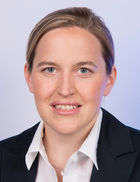Surprisingly Equal, Surprisingly Unequal
Judith Niehues is an economist at the Cologne Institute for Economic Research. She can be contacted at niehues@iwkoeln.de
COLOGNE, Sep 20 2014 (IPS) — Thomas Piketty, a French economist who works on wealth and income inequality, has triggered a debate on the distribution of income and wealth in many countries. This is no small issue because views on income inequality and concomitant redistributive preferences are crucial to the design of tax and transfer systems.
Particularly in many European countries, society is concerned about distributional issues, reflected in recurring debates on redistributive policies. However, a study presenting international survey data on subjective perceptions of inequality and redistributive preferences reveals that perceived and actual inequality diverge quite substantially in many of these countries.
According to the 2009 Social Inequality Module of the International Social Survey Programme (ISSP), more than 50 percent of Germans strongly agree that differences in income are too large.
Correspondingly, a similar portion of Germans thinks that it is “the responsibility of the government to reduce the differences in income between people with high incomes and those with low incomes” – a questionnaire item which is commonly used to capture subjective preferences for redistribution.
Regarding this majority of critical views on inequality, social justice and redistribution are topics for debate that continually feature on the political agenda in Germany – reflected in the current introduction of redistributive policies, such as a minimum wage and additional pension benefits for mothers.
On the other hand, in the United States – which is characterised by a far higher degree of actual income inequality – people are less concerned about income differences, and they do not see any reason for redistributive state intervention. There is virtually no empirical relationship between the actual size of inequality within a country and how critical people view these income differences to be.
The missing link between inequality and its assessment is not specific to these two countries. In a sample of 23 European countries and the United States, there is virtually no empirical relationship between the actual size of inequality within a country and how critical people view these income differences to be.
Obviously, there might be a range of individual and national factors which may explain cross-country differences in critical views on income differences and related redistributive preferences.
For example, in line with the argument of the “American exceptionalism”, people in the United States might just accept certain inequalities as incentives because they believe in the chance of upward mobility.
On the other hand, Germans may be more convinced that income positions arise from luck or other exogenous circumstances, thus regarding inequality as more unfair, and therefore they might demand more state redistribution.
However, current research on mobility reveals that there is a tendency for countries with higher inequality to also be associated with less income mobility.
Looking instead at how types of societies are perceived – a questionnaire item also included by the ISSP – gives some clues: 54.2 percent of Germans believe that the bulk of the German population lives rather at the bottom of society.
To what extent does this perceived type of society match with actual income distribution in Germany? Although there are different ways of demarcating society into a “bottom”, a “middle” and a “top”, studies generally reveal that the middle class represents by far the largest group in German society.
In particular, independently from the chosen definition of income groups, people on middle incomes are far more numerous than those at the bottom of the income distribution scale. This rather pessimistic view on income equality is typical of the European countries studied.
In most countries, the population significantly overestimates the degree of inequality. This is particularly true for former socialist countries such as Hungary, Slovenia as well as the Czech and Slovak republics.
In Hungary, for example, 56.6 percent of the population views Hungarian society as “a small elite at the top, very few people in the middle and the great mass of people at the bottom”, although the country is characterised by one of the lowest income inequalities in the European Union.
Thus, it is not that former socialist countries view already small income differences as much more critical, but that the population is just not aware of the small level of income inequality.
The situation is different in the Scandinavian countries. Here the various populations are much more realistic about the low levels of inequality and truly identify their societies as “typical middle class models”.
In contrast to the European countries, the United States reveals a completely different picture: U.S. citizens substantially underestimate the extent of inequality in their country. The lower income group in the United States is considerably larger than Americans suppose
This varnished view on inequality in the United States is not new – but it is rather new that in European countries it tends to be the other way round.
These results provide an explanation of why redistributive policies find more support in some countries than in others.
Although results from previous ISSP surveys suggest that cross-country differences in views on inequalities and redistributive preferences tend to change slowly, it would nevertheless be interesting to see if critical views on income differences and redistributive preferences would change if citizens were aware of the actual degree of inequality in their countries.
Interestingly, the overestimation of inequality is adversely related to the absolute level of living standards in corresponding countries. Thus, it might also be the case that the perceived structuring of the society is more associated with absolute levels of living standards than commonly suggested.
(Edited by Phil Harris)
- ADVERTISEMENTADVERTISEMENT


IPS Daily Report








